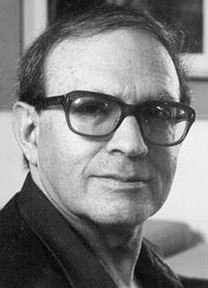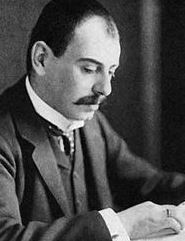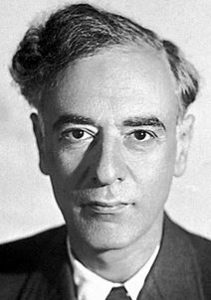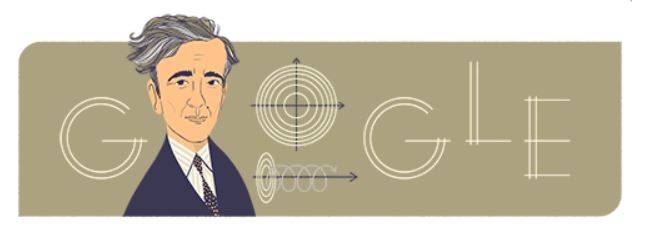Quantum Physicist and IDF Commander

Yuval Ne’eman
Yuval Ne’eman (1925-2006) was born in Tel-Aviv. His grandfather Aba Ne’eman had made aliyah to Yaffo from Lithuania as an eighteen year old, and was later among the first 66 families which settled and co-founded the city of Tel-Aviv. His grandfather also set up the city’s first electrical generator, and built some of its first factories. This may be what inspired Yuval to study mechanical engineering. He enrolled at Technion at age 15. At the same time, he joined the Haganah, and would fight valiantly in Israel’s Independence War, rising to the rank of commander of the Givati Brigade. Having spent several years living in Egypt with his parents as a child, Ne’eman spoke Arabic fluently and served as a liaison to Israel’s Mizrachi Jews, helping to settle them in the new country. In the mid-1950s, Ne’eman played a key role in the IDF’s operational command, developed its reverse mobilization system, and wrote Israel’s first defense doctrine. Meanwhile, he joined Israel’s Nuclear Energy Commission and oversaw the development of Israel’s nuclear capabilities. While serving as IDF attaché in London, he earned his PhD in physics. The following year he published his classification system for hadrons, laying the foundation for the quark model of quantum physics (proposed by recent Jews of the Week Murray Gell-Mann and George Zweig). Ne’eman returned to Israel in 1961 to direct the Soreq Nuclear Research Centre, one of the most important R&D facilities in Israel. He retired from the IDF with the rank of colonel, and founded Tel Aviv University’s School of Physics and Astronomy in 1965. Ne’eman directed it for the next seven years, then became president of he whole university. After this, he directed its Sackler Institute of Advanced Studies for nearly two decades. Ne’eman also co-directed the Center for Particle Theory at the University of Texas in Austin. A big believer in space exploration, he founded the Israel Space Agency in 1983 and chaired it until his death. He was chief scientist of Israel’s Defense Ministry in the 1970s, which opened the door for him to enter politics. Ne’eman founded the right-wing Tehiya party in response to Israel’s peace treaty with Egypt. He was elected to the Knesset in 1981 and became the country’s first Minister of Science and Technology. He continued to serve in the Knesset for over a decade. Among his many awards are the Israel Prize, the Wigner Medal, and the Albert Einstein Prize. He was also a member of the National Academy of Sciences. Ne’eman wrote a layman’s book on quantum physics called The Particle Hunters, which has been described as “the best guide to quantum physics at present available.”
Words of the Week
… Most of my people think as I do, but they’re afraid to say so… we suffer because of our Arab brothers, but we are also dependent on them. It’s a bizarre situation because the Arab countries don’t really care what happens to the Palestinian people. The only assistance that we have ever received from any country was from the ‘Zionist enemy.’
– Muhammad Zahrab, Palestinian Arab scholar




 Richard Phillips Feynman (1918-1988) was born in Queens to Lithuanian Jewish immigrant parents. Before his birth, his father had decided that his son should be a scientist, and raised Feynman from an early age to question everything. Feynman did not speak his first word until he was three years old. In childhood, he loved to take things apart and even set up a lab in his home, hiring his little sister for 4 cents a week to be his assistant. (He would later inspire and encourage her to become a renowned astrophysicist in her own right.) At 15, he taught himself advanced algebra, calculus, and trigonometry. He applied to Columbia University but was rejected because the quota for Jewish students had been filled. Feynman went to MIT instead, first majoring in math, then electrical engineering, and finally physics. He published his first two papers as an undergrad, and his senior thesis (putting forth what would become the Hellmann-Feynman theorem) brought him a great deal of recognition in the scientific community. Feynman then applied to grad school at Princeton, and got an unprecedented perfect score on the physics exam. Again, he was initially brushed aside for being Jewish before the dean was convinced not to miss out on the young genius. (Feynman was admitted only on the condition that he wouldn’t get married!) At 23, he defended his Ph.D, and was already being compared to
Richard Phillips Feynman (1918-1988) was born in Queens to Lithuanian Jewish immigrant parents. Before his birth, his father had decided that his son should be a scientist, and raised Feynman from an early age to question everything. Feynman did not speak his first word until he was three years old. In childhood, he loved to take things apart and even set up a lab in his home, hiring his little sister for 4 cents a week to be his assistant. (He would later inspire and encourage her to become a renowned astrophysicist in her own right.) At 15, he taught himself advanced algebra, calculus, and trigonometry. He applied to Columbia University but was rejected because the quota for Jewish students had been filled. Feynman went to MIT instead, first majoring in math, then electrical engineering, and finally physics. He published his first two papers as an undergrad, and his senior thesis (putting forth what would become the Hellmann-Feynman theorem) brought him a great deal of recognition in the scientific community. Feynman then applied to grad school at Princeton, and got an unprecedented perfect score on the physics exam. Again, he was initially brushed aside for being Jewish before the dean was convinced not to miss out on the young genius. (Feynman was admitted only on the condition that he wouldn’t get married!) At 23, he defended his Ph.D, and was already being compared to